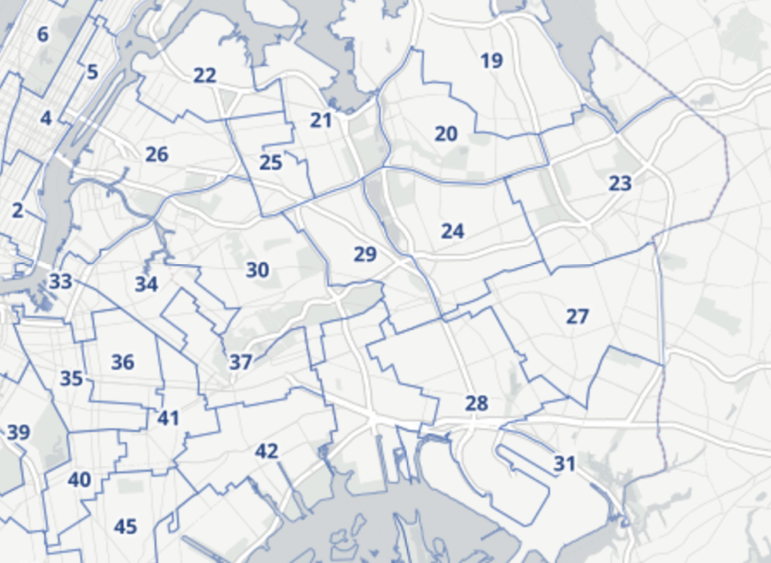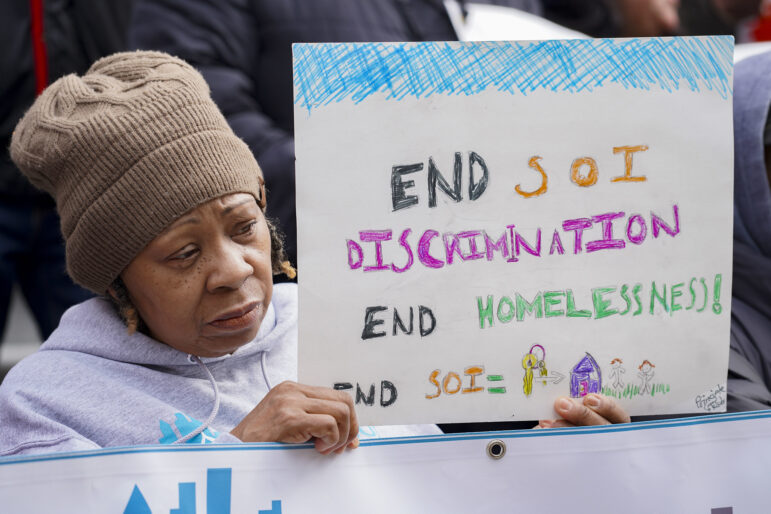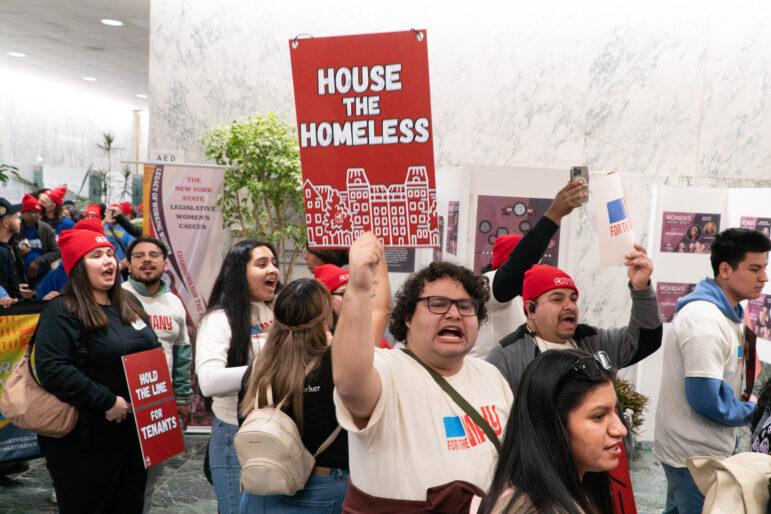
New York City Council
Queens City Council Districts
Queens councilmembers joined their primary challengers – at times eager to engage their incumbent foes – to discuss how rezoning, homelessness and access to transportation affect their districts during an annual candidate forum Thursday night at St. John’s University.
In total, fifteen Democrats and one Republican – Joe Concannon running in District 23 – attended the event, which split into two hour-long forums, each featuring eight candidates. Though opponents shared microphones, the gesture of cooperation failed to prevent some pointed back-and-forth, especially from District 20 Councilman Peter Koo and rival Alison Tan who traded barbs about personal cigarette smoking, luxury condo purchases and donations from developers.
In the first session, candidates addressed the theoretical threat of neighborhood upzonings—there are none on the table now in their districts—and more generally, high-density development. Councilwoman Elizabeth Crowley and challenger Bob Holden from District 30, Councilman Paul Vallone and challenger Paul Graziano from District 19, District 24 councilman Rory Lancman and Koo each said they opposed high-density development.
Crowley and Holden said existing traffic and transit congestion made upzoning to create more affordable housing impossible.
“The problem with Queens is the transportation infrastructure – we’re maxed out,” Crowley said. “Whether it’s our 7 train or our Queens Boulevard line, there’s no more room. There’s no capacity on these rails to help with overcrowding. We need to improve transportation if we’re going to develop affordable housing.”
Tan* criticized Koo for opposing the Flushing West rezoning plan, which she said would have increased the affordable housing stock.
“People who have lived in the district for a long time are being priced out and yet there’s a shortage of affordable housing,” she said. “Under his watch, numerous luxury condos have been developed and those developers have not been held accountable for delivering affordable units to the community.”
Koo said the planned rezoning would not have benefited the existing neighborhood residents and later criticized Tan for blasting pricey development when she herself lives in a luxury condo “with a swimming pool and tennis courts.”
“Me living in a luxury condo is very different than how every single luxury condo developer in Flushing has contributed to your political campaign. That is a conflict of interest,” Tan responded, pointing her index finger at Koo (with the Campaign Finance Board website down on Friday, City Limits could not search how many developer donations Koo has received). “You can’t hold these developers accountable to delivering affordable units to our neighborhood. You can’t hold accountable the people who bankroll your campaign.”
Monserrate – a former state senator expelled from the senate after assaulting his girlfriend and a former councilman who admitted to funding a previous campaign with council money allocated to nonprofits – called for resuscitating a plan to rezone Willets Point and develop 5,500 housing units, of which 35 percent would be affordable. His contender, Assemblyman Francisco Moya, who did not attend last night’s event, has his own plan for the Willets Point area.
Homeless Shelters, Hotels and NYCHA vacancies
All candidates addressed the impact of homelessness in their districts, but few provided specific proposals for addressing the housing crisis. Instead, their responses contained varying shades of “NIMBY-ism” regarding shelter placement: few were willing to welcome shelters, though only District 32 overlaps with a community district that ranks among those with the highest ratio of shelter beds to population.
During the second session, Councilman Barry Grodenchik and challenger Concannon from District 23, candidate Anthony Rivers from District 27, candidates Mike Scala and William Ruiz from District 32 and candidates Adrienne Adams, Hettie Powell and Richard David from District 28 – a seat vacated by Ruben Wills’ corruption conviction – said new shelters shouldn’t be built in their home districts.
“We have been the dumping ground for everything that every other community does not want,” said Adams from District 28, which includes parts of Jamaica and South Ozone Park. “We continue to fight for equity. Everybody needs to bear this burden – not just Southeast Queens.”
Vallone, whose district spans Northeast Queens neighborhoods like Bayside and Little Neck, said he and other shelter opponents are not “bad guys” – their opposition reflects the need for more community participation in deciding where to place new shelters.
“We want to have a say in the process,” he said. “We’ve stopped every attempt to put them in our district because it doesn’t make sense. Make sure there’s input from everybody before you just stick one in our backyard.”
Graziano, the primary challenger, also said he opposed any shelters in District 19 and called Holden – president of the vocal Juniper Park Civic Association – a “hero” for confronting the mayor’s shelter expansion plan.
“Our area shouldn’t have any homeless shelters because there’s about forty homeless families in all the 19th Council District,” he said. “We need homeless shelters and we need affordable housing in the places that need them.” (The mayor has also expressed interest in siting shelters near to the places where homeless families live before becoming homeless.)
Meanwhile, Crowley and Holden each claimed responsibility for rejecting the use of a hotel to house homeless families in Maspeth, a flashpoint in the debate over housing homeless New Yorkers in commercial hotels and opening shelters in middle-income communities.
“We were out there every night protesting,” Holden said, as a small band of his supporters cheered. “We stopped that Holiday Inn.”
After moderators prompted candidates about what to do with vacant NYCHA units, Ruiz suggested filling the vacancies with homeless families.
“If we have a huge problem with the homeless and we have all these empty apartments, let’s fill them,” he said. “Instead of paying thousands of dollars to landlords, let’s fill in NYCHA.”
(NYCHA, according to a 2015 report, has a very low, one percent vacancy rate. The authority has committed to providing at least 1,500 units to homeless families each year through 2020, though some advocates would like to see even more given to homeless families.)
The Queens “transportation desert”
The issue of transportation drove much of the conversation, including a question directed at Crowley and Holden about reopening the dormant Rockaway Line and several references to Queens as a “transportation desert” requiring expanded select bus service.
Holden said he would support reactivating the Rockaway Line and institute a commuter tax on out-of-towners who work in New York. Crowley seemed to suggest opening a piece of the line until it connected with a strip of Long Island Railroad tracks between Jamaica and Long Island City that she said she wants turned into a “Queens Light Rail.”
All candidates except Ruiz, Scala, Concannon, Grudenchik and Holden said they supported the Mayor’s proposal to fund MTA improvements by taxing wealthier New Yorkers.
Many candidates seemed to struggle with a “lightning round” of questions designed to get them on the record about controversial issues at the end of each session.
When asked whether the city should close Riker’s Island, Monseratte, Lancman, Koo, Adams and David said “yes” without qualifications. Crowley did not use the microphone to respond and jeers from the Holden supporters masked her answer.
When asked whether police disciplinary records should be made public Concannon, Holden, Vallone and Ruiz responded with a firm “no” while David, Graziano, Crowley, Lancman, Monseratte, Koo and Tan said yes. Despite the yes-or-no format of the lightning round, the other candidates equivocated and said the release of information depends on the circumstance.
All but Concannon and Holden said they agreed with the city’s status as a so-called Sanctuary City.
*CORRECTION: The original version of this article incorrectly indicated that Tan said she supported upzoning the area outside of Downtown Flushing. She did not say as much, and her campaign says she does not support any such move.









